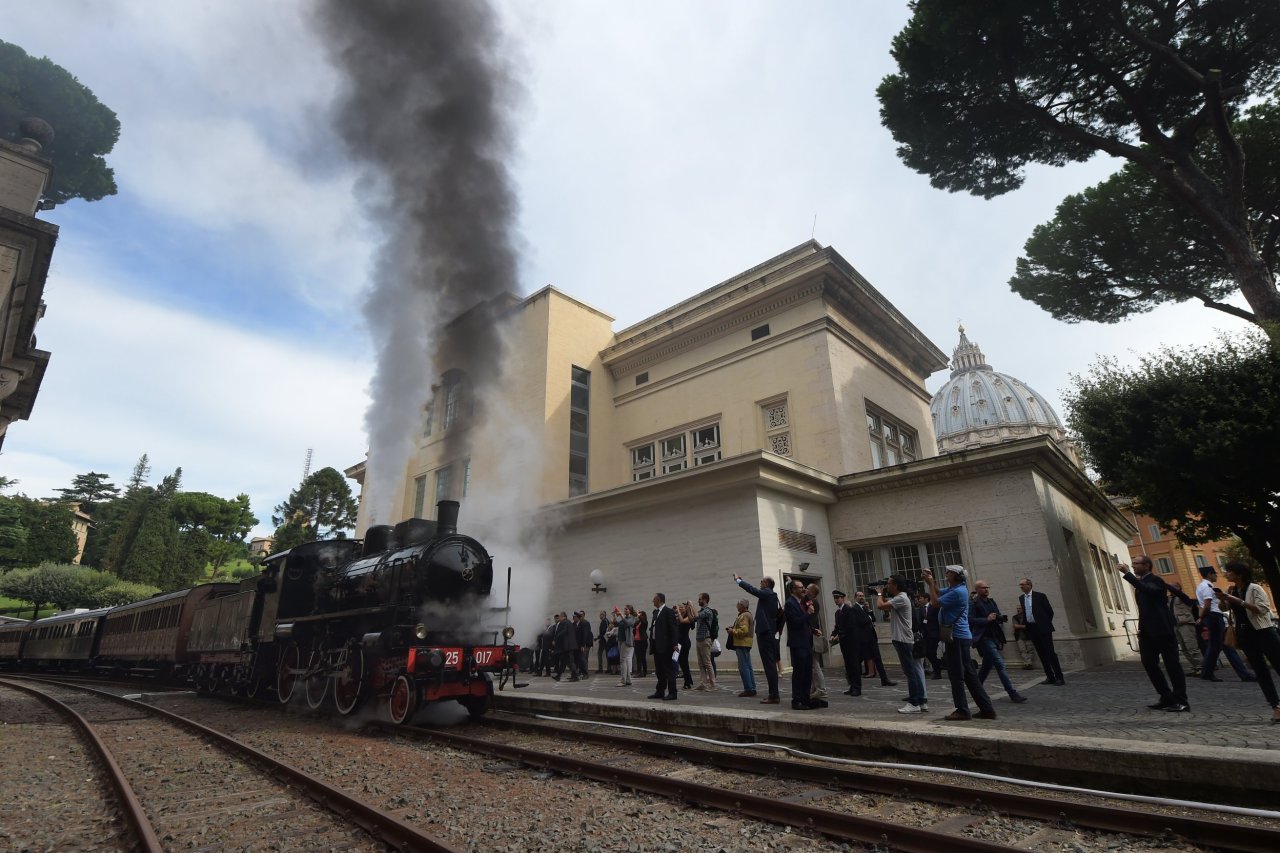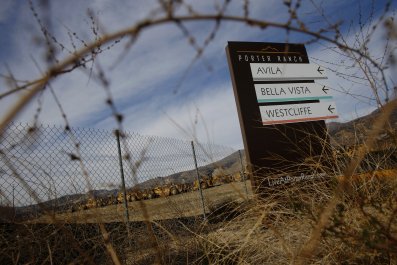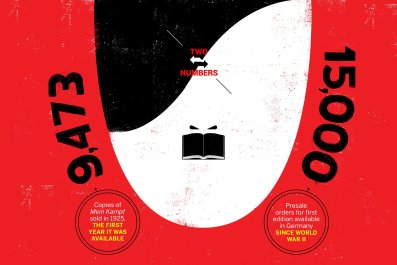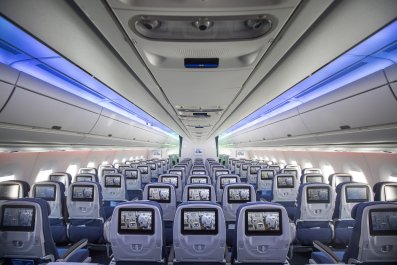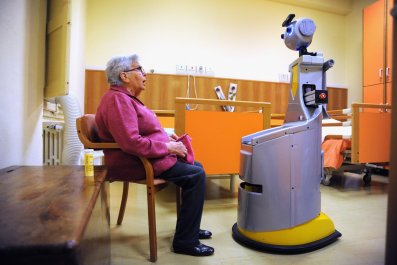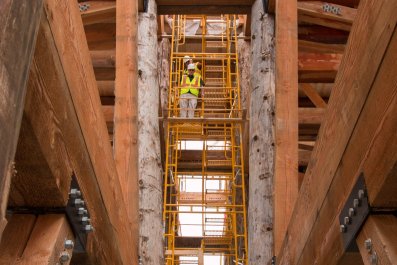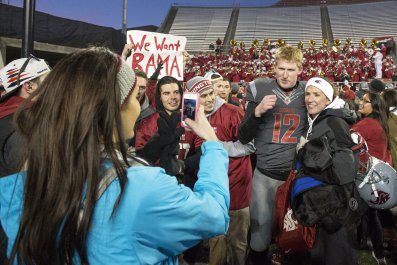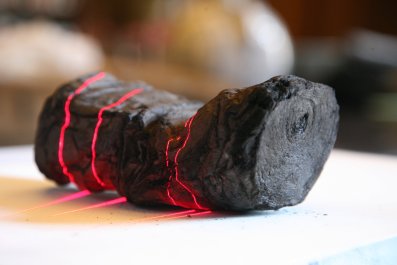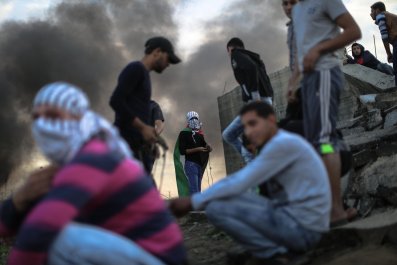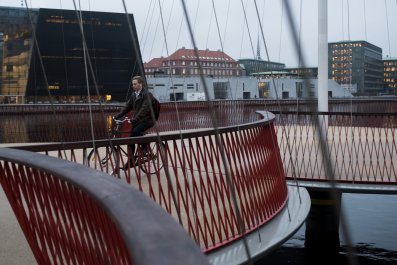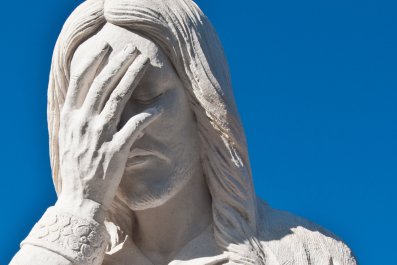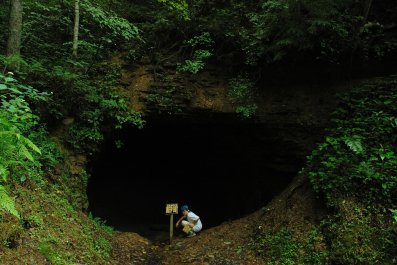Visit Rome and you're almost guaranteed to return home with memories of fresh pasta, ripe tomatoes and peppery olive oil. Heavenly, right? Well, not quite as divine as this: Pope Francis has turned grocer, and since early 2015, visitors to the city have been able to go to his farm and purchase its produce.
Perched in Rome's southern hills, about an hour's drive from the Vatican, is Castel Gandolfo, the pope's summer residence. The full complex, the Pontifical Villas of Castel Gandolfo, spans 136 acres, of which 62 are used for farming. Much of what Francis eats—from fresh olives to caciotta cheese—comes from this land.
Unlike some of his predecessors, Francis does not appear to be particularly interested in relaxing at the retreat, which features gardens, historic ruins and a swimming pool. (Pope John Paul II installed the pool.) Since the start of Francis's tenure, he has visited just a few times and not once stayed overnight. He opened Castel Gandolfo to visitors in 2014. In October, Antonio Paolucci, the director of the Vatican Museums, reported Francis as saying, "I don't use Castel Gandolfo. Why not let the people enjoy it?"
Francis's open-door policy is now in place across the Catholic world. On March 13, 2015, he announced that a holy year, named the Extraordinary Jubilee of Mercy, would begin on December 8 of that year. In the Catholic tradition, ordinary jubilees are held every 25 to 50 years, while the pope can convene additional extraordinary ones. The theme of this holy year is mercy. The Vatican has asked that each diocese open a door in one of its churches, cathedrals or shrines to symbolize a holy door, through which the faithful can pass and in doing so participate in the jubilee.
Before the year began, Francis opened another set of doors: those to his pantries. Guests now can wrap up a tour to the Pontifical Villas with a visit to Francis's farm, where they can purchase Vatican produce as if they were at a regular farm shop. Until recently, Vatican food and wine were available only in the state's supermarket, which is off limits to anyone who isn't a diplomat, holy person or Vatican employee.
Every Saturday, locals from the nearby town of Albano Laziale line up to buy the pope's fresh vegetables, fruit, eggs, milk, wine, honey and olive oil. Marked with the label Fattoria Ville Pontificie—the farm of the Pontifical Villas—the choicest products include creamy mozzarella, ricotta, stracchino and teardrop-shaped caciocavallo cheeses. It's all organic and of the highest quality.
One of the most popular items among the pope's customers is unpasteurized milk, which comes from his herd of dairy cows. In December 2014, this herd grew with the addition of two donkeys, a gift from the donkey milk company Eurolactis. Francis seemed happy with his new animals—he has acknowledged having a taste for fresh donkey milk, which he drank as a child.
"Everything in those orchards and fields is greener, healthier, tastier," says local resident Gisella Bianchi. "The cattle, donkeys, ostriches, rabbits and hens are free to roam on a wide, lush estate without city pollution. The only bad thing is the smell of stables, which often sweeps through town."
For tourists, getting to the farm is easy. In September, the Vatican Museums began train service to shuttle visitors between the so-called two Vaticans—St. Peter's Basilica in the holy city and the Pontifical Villas. The country estate is legally part of the Vatican state.
The train departs from the Vatican's private railway station, a marble building close to the basilica and its famous Michelangelo-designed dome. It chugs along the Vatican railway line—a total of 984 feet of track, making it the shortest national train line in the world. The train then enters Italy and continues to the Pontifical Villas, where a shuttle bus collects travelers and takes them to the estate.
Once in the papal gardens, visitors can take a stroll past the Albanum Domitani, the ruins of Emperor Domitian's summer residence, which spanned nine miles when it was built. The estate has two gardens, one devoted to roses and the other to magnolias. Amid the woodlands is the farm itself, with its beehives, cattle and fruit trees.
Francis chose his papal name in tribute to St. Francis of Assisi, who is celebrated for his care of animals and concern for nature. The modern-day Francis has in some ways modeled himself after his namesake, writing at length about climate change and suggesting that animals go to heaven. St. Francis would no doubt have approved of his namesake's decision to share the fruits of his fields.



